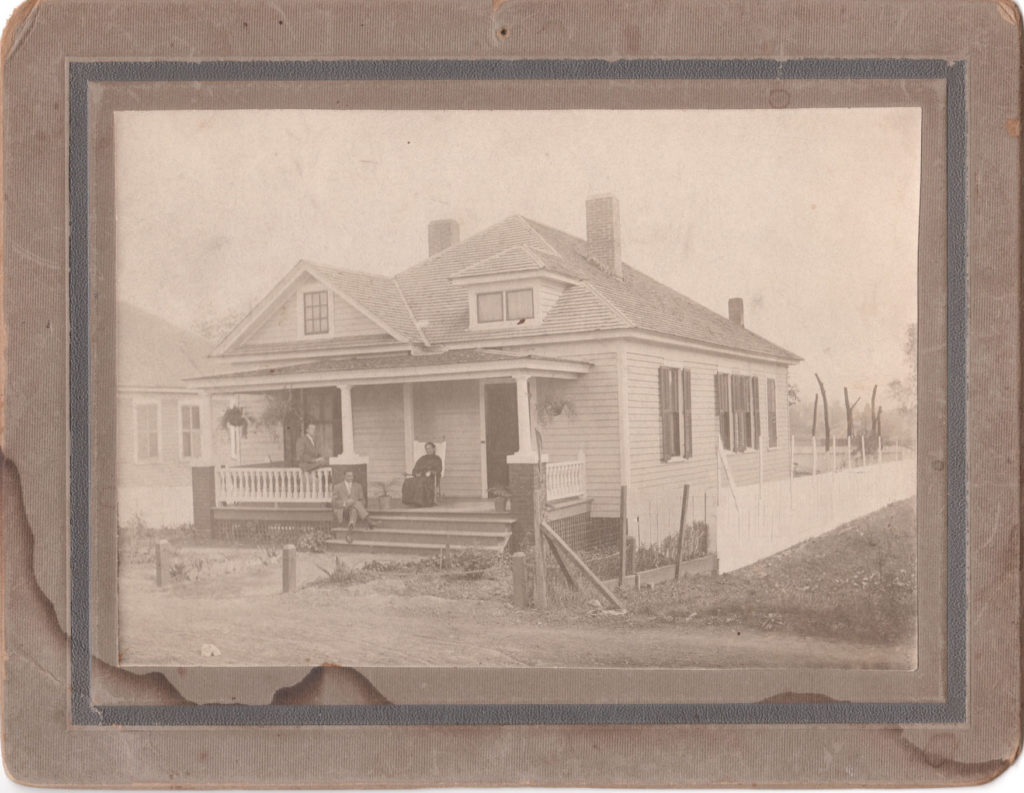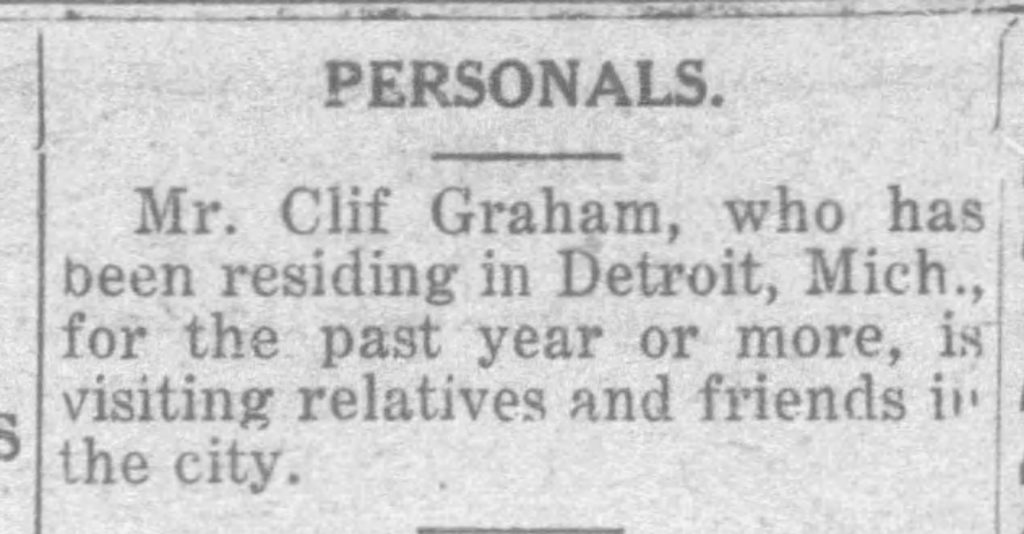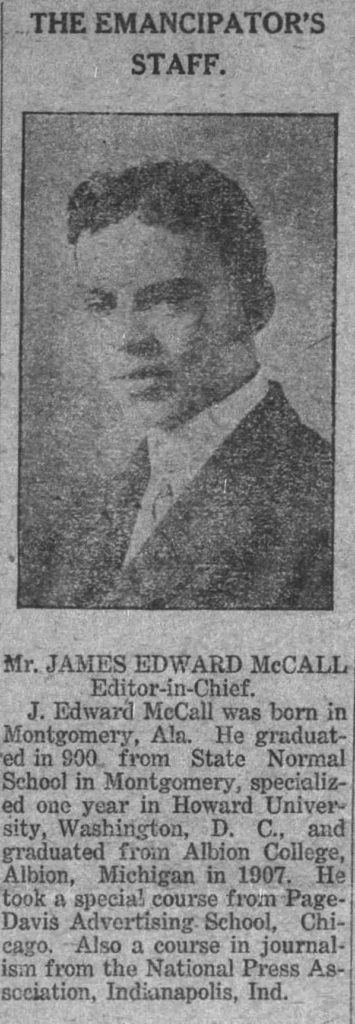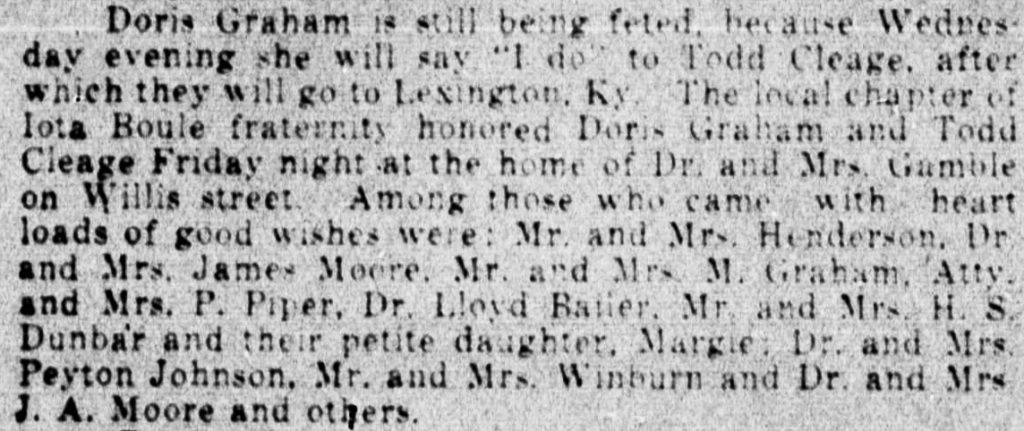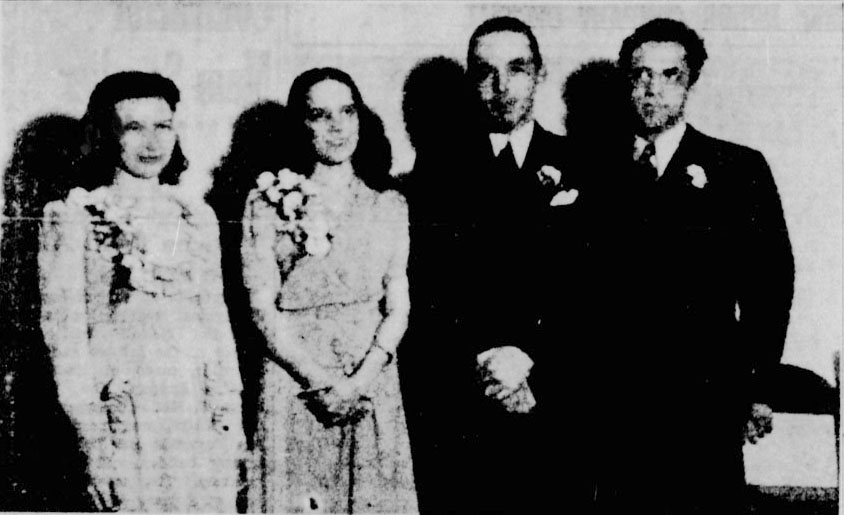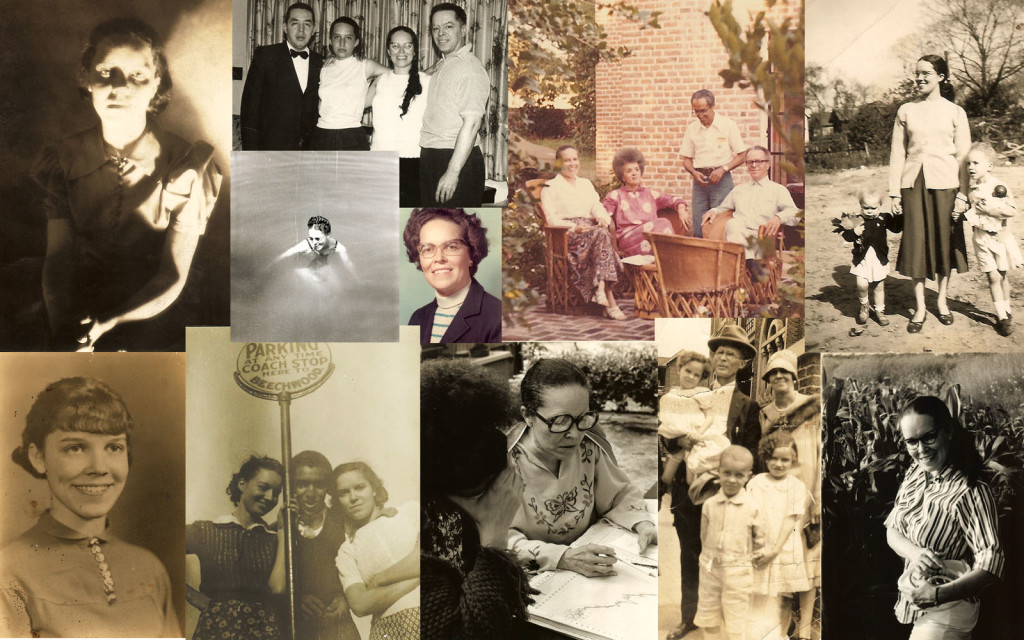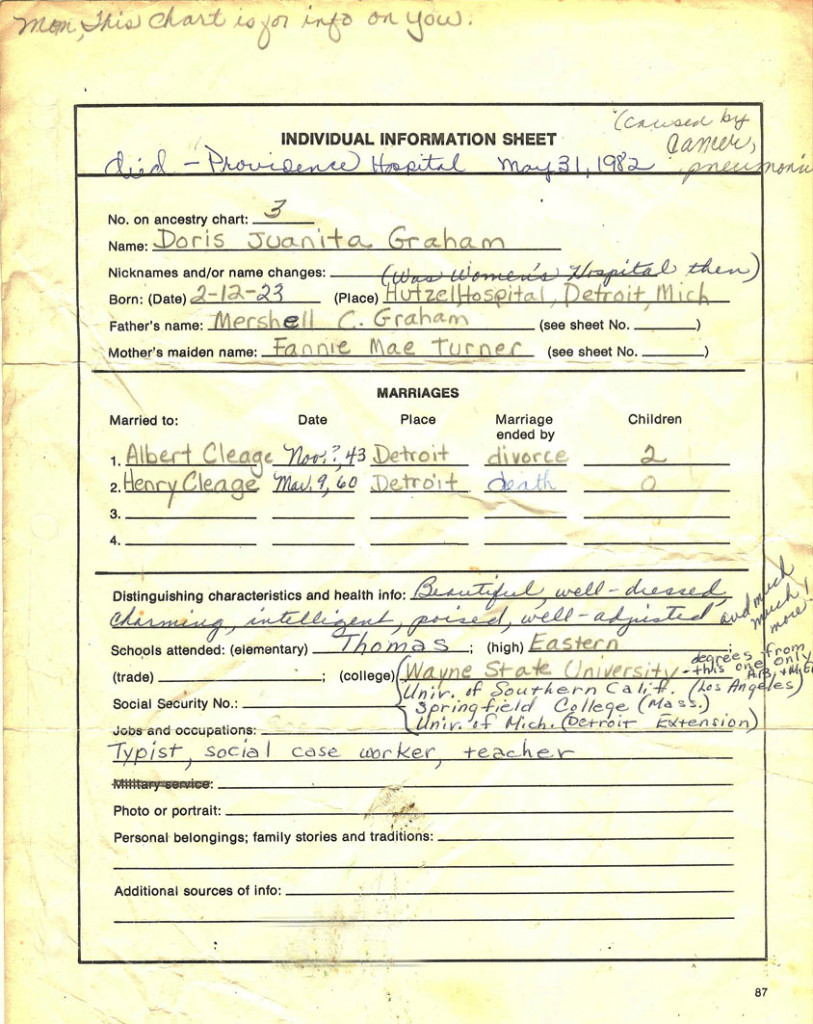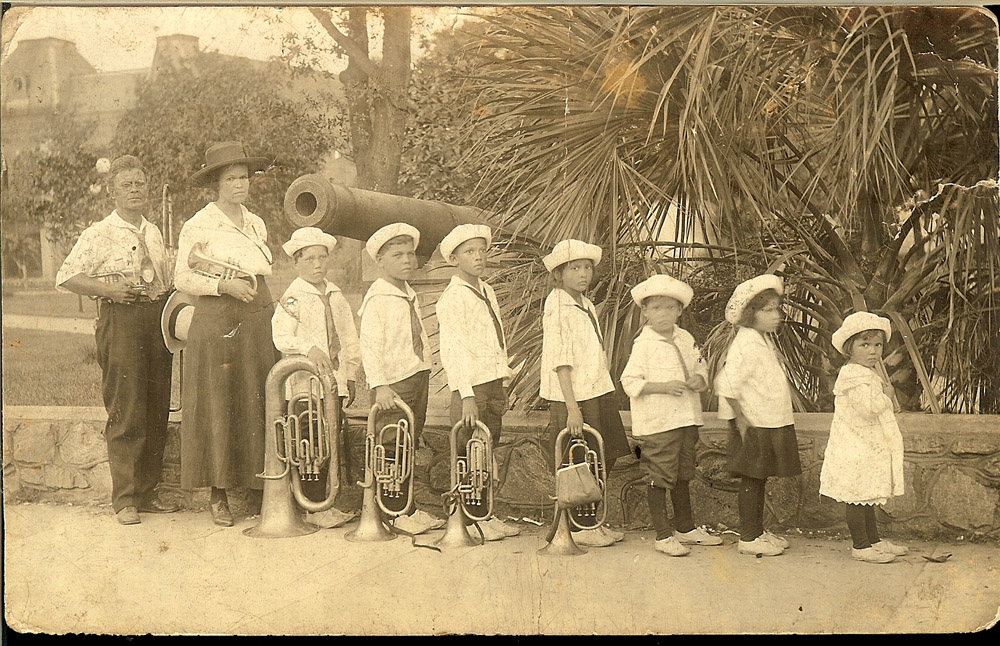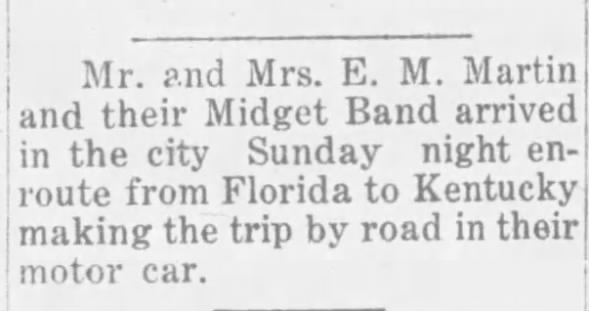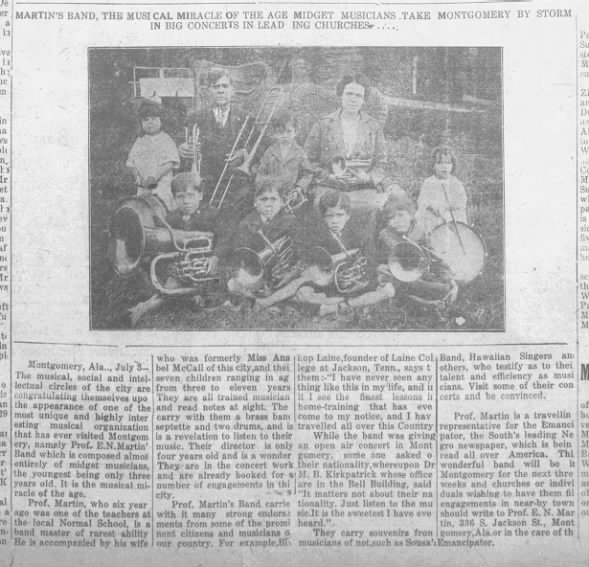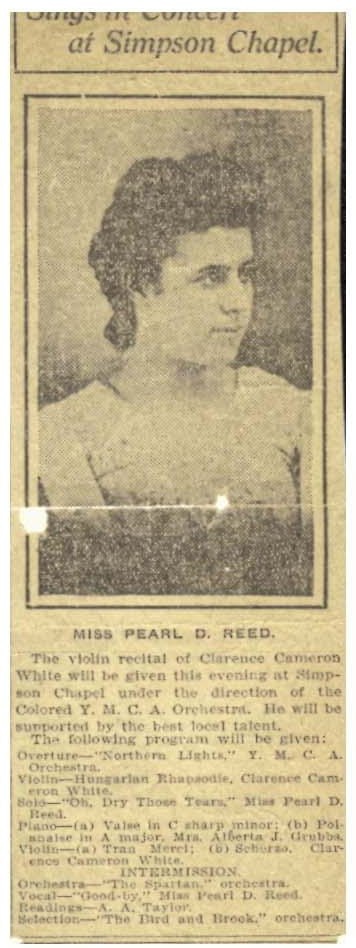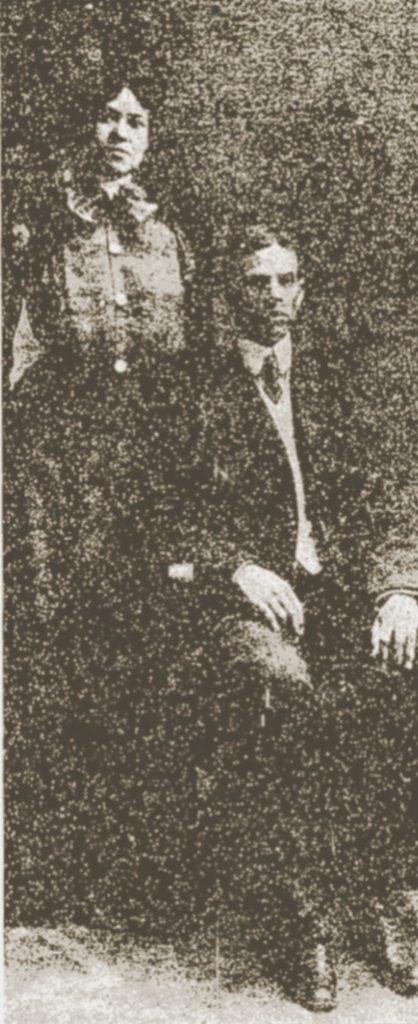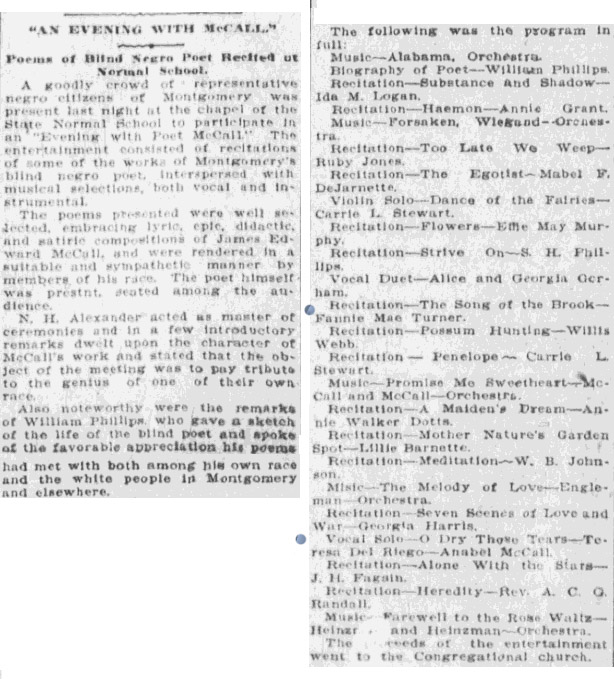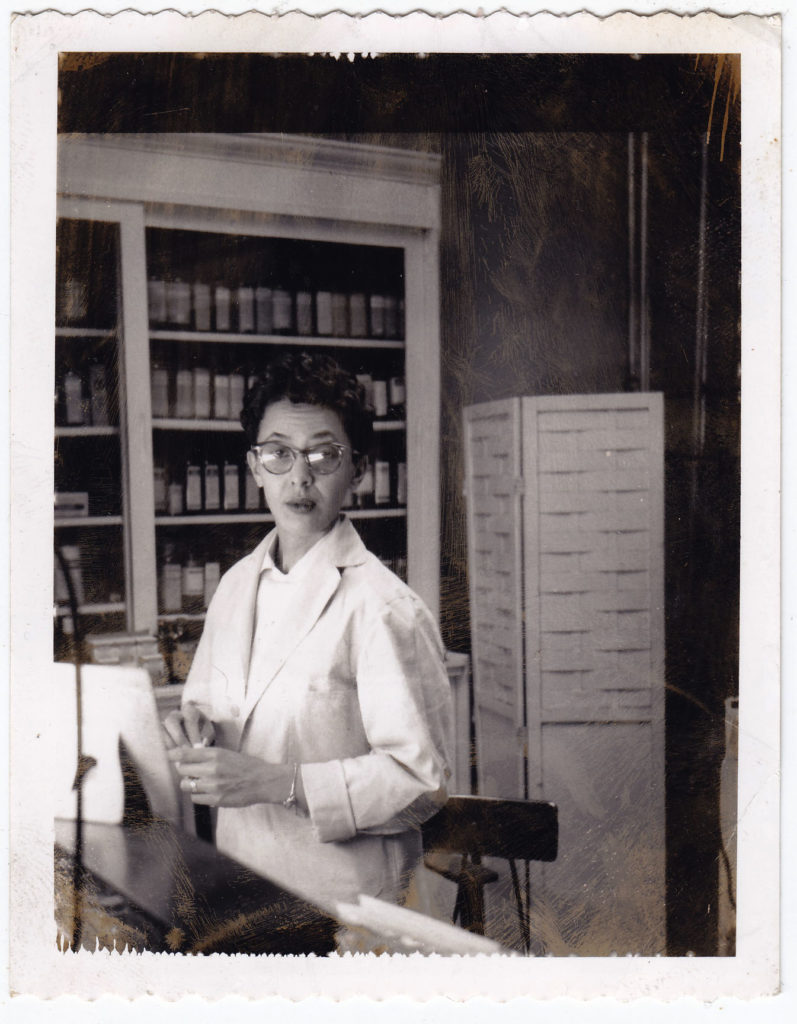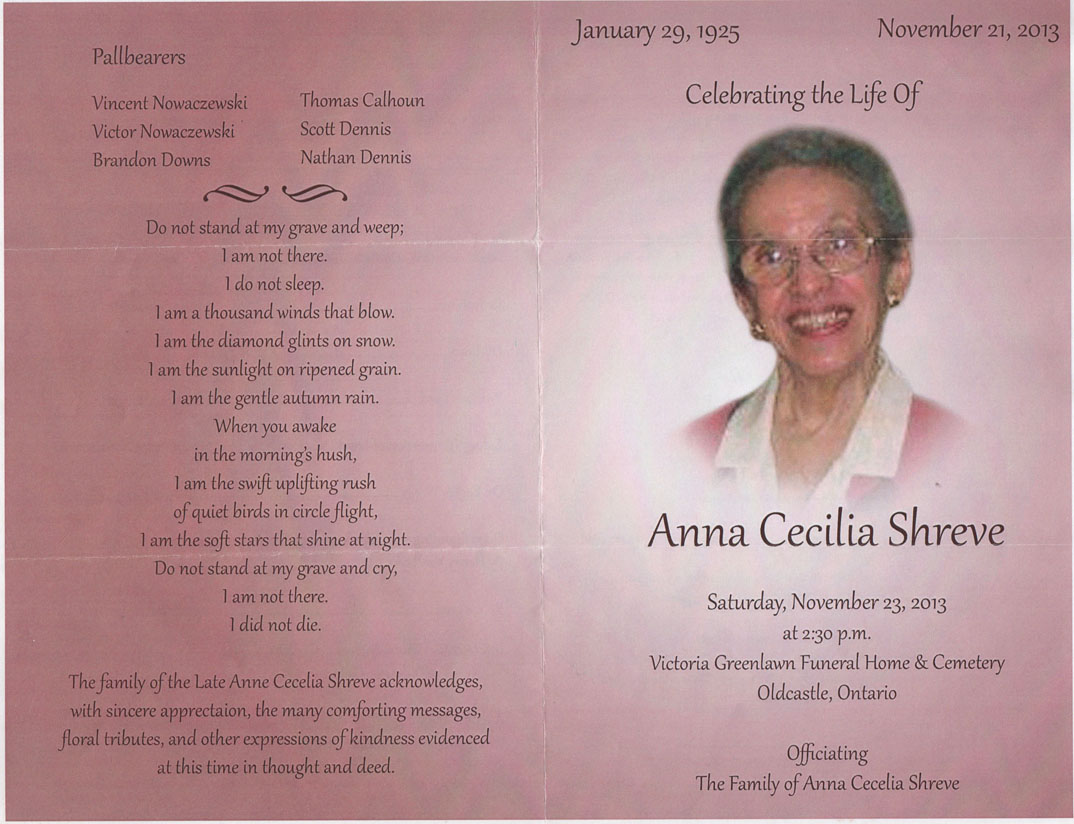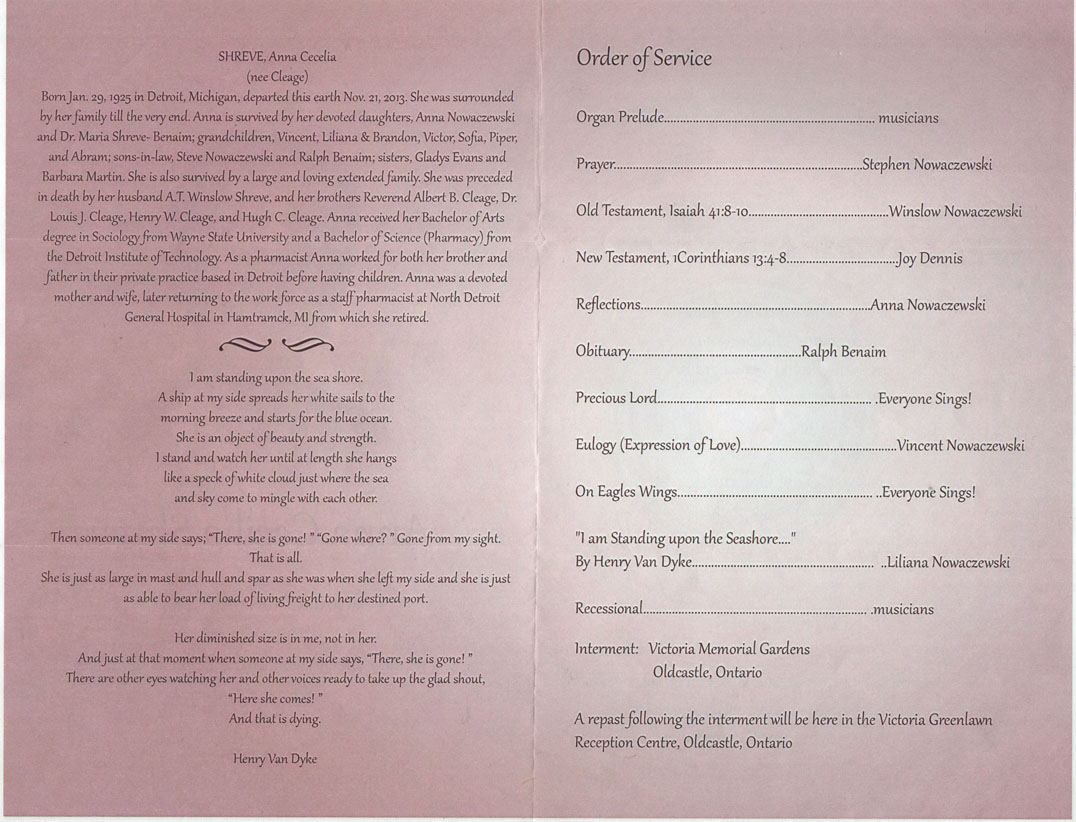This year I am going through an alphabet of news items taken from The Emancipator newspaper, published between 1917 and 1920 in Montgomery, Alabama. Most are about my grandparent’s circle of friends. Each item is transcribed directly below the clipping. Click on any image to enlarge.
________________
Virgie and John were members of the same church that my grandparents attended.
“A marriage of interest to the many friends of both young people is that of Miss Virgie Dorsette Beckwith and Sergeant John W. Blakely, which was quietly solemnized Mar. 24 1919 at the home of the bride’s father, Mr. P.S. Beckwith, 517 South Street, Rev. E.E. Scott officiated, only relatives being present.
Miss Beckwith is a young woman of sterling qualities and has many friends who regret that her marriage will take her from Montgomery.
Sergeant Blakely left immediately after the ceremony for Evanston, Ill.
At home after June 10th at 1922 Wesley Ave, Evanston, Ill.”
_________________________
Virgie taught school in Montgomery for several years before her marriage. She did not work outside of the home afterwards. The couple moved to Chicago and lived there for the rest of their lives. John continued to work as a barber until his death in 1952. Virgie died two years later in 1954. John and Virgie Blakely had no children.
I have found no siblings for John Blakely. Virgie was one of five. Four of them, moved north. Her father eventually moved north also and joined two of his children in Cleveland, Ohio. One daughter moved to Detroit and one daughter remained in Montgomery.
_______________
John W. Blakely was a friend of my grandfather, Mershell C. Graham. In 1918 about a year before his marriage, Blakely wrote the following letter to him.
Montgomery Ala Feb 27/1918
My Dear Pal;
Your letter of a few days ago was received, and I can assure you that a line from my old friend was highly appreciated. I remember writing you some time ago and for some reason I did not hear from you until now, but failing to put my address on my letter naturally would leave you in doubt as to where to write me, all of which I am very sorry. I was indeed glad to hear that you and the other boys were all enjoying the very best of health and that the government has used good judgment in classing all of you in class A-1 and I only want you to know that when ever you all get there, you can rest assured that you will have the opportunity of seeing me for I am now in the old city taking my examination, they passed me all OK. So you can see it is very likely I shall soon be somewhere in a training camp, I do wish however that it was possible for me to train somewhere in the Northern camps instead of the southern camps. I am sure you understand why. I shall leave tonight for Atlanta where I shall wait until they are ready for me to report for duty. I was out to see your Mother Monday afternoon. Found her looking and feeling the very best of health and was very glad to see me and to know that I had heard from you. Of course she is worried over the thought of you boys having to go to the army, but said that if there was no way to keep out of it, why she felt she would have to make some sacrifice which is indeed a fine spirit. I also stopped by Gwen and her mother’s. They were both looking fine. She was sick when I was here Xmas so I didn’t get a chance to see her and of course you know I couldn’t leave the city without seeing the Fairest Lady of the land. Glad to say that she is looking just fine said that she would like so much to see you.
Montgomery is as dry as a chip. There is really nothing doing here, all of the boys of our push have gone away with the exception of four – Adams, Taylor, Gilmer and Nathan. Mack; I wish it was possible for me to say just at present whether or not I will be able to come west or not this spring or even in the summer but as things are arranged now it is hard for me to say. But if I am not called in to service real soon, why I shall have more time to think it over.
I am doing nicely in Atlanta. I have the 5th chair in a 12 chair shop, which, of course is the largest shop there. So far as getting along OK, why I really have no reason to complain, but there is a desire to have that privilege to breath for once in life one deep breath of pure free atmosphere as a man, as well as meeting again with old friends.
I wish to be remembered to Cliff and Chisholm and to you all. I hope your every efforts will be crowned with success.
Trusting that I shall hear from you again real soon,
I am your friend,
J.W. Blakely,
#8 Central Ave.
Atlanta, GA
___________________
I found this information on Ancestry.com in Census Records, Directories, Death Records, Military Records and Marriage Records. News items were found on Newspapers.com. I also use Google Maps. The letter is from my family archives.
